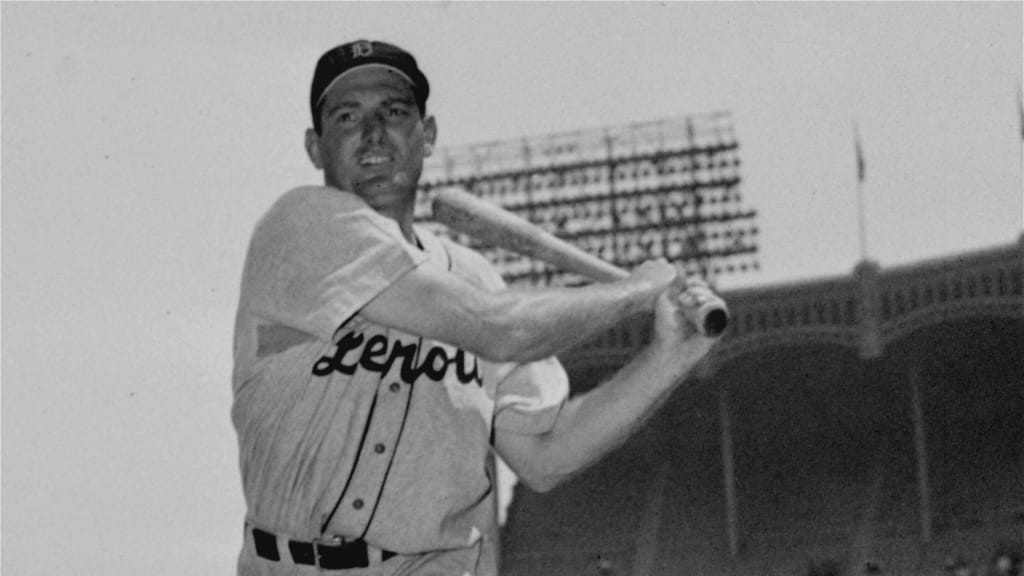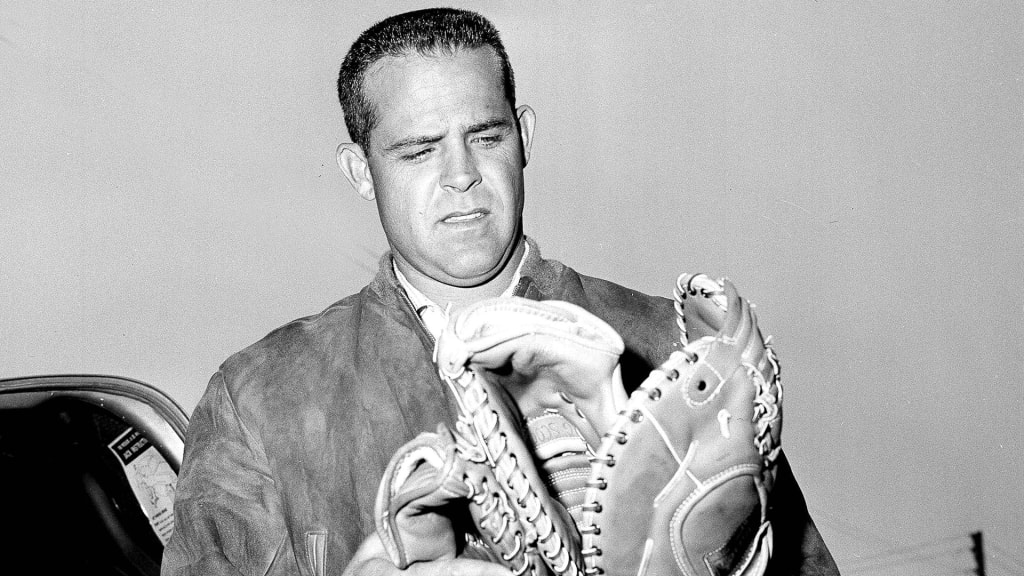
No one loves a good debate quite like baseball fans, and with that in mind, we asked each of our beat reporters to rank the top five players by position in the history of their franchise, based on their career while playing for that club. These rankings are for fun and debate purposes only. If you don’t agree with the order, participate in the Twitter poll to vote for your favorite at this position.
Here is Jason Beck’s ranking of the top five third basemen in Tigers history. Next week: shortstops.
1. George Kell, 1946-52
Key facts: Won American League batting title in 1949; inducted into National Baseball Hall of Fame in '83
Before Kell became known as the voice of Tigers telecasts, he was an outstanding third baseman and perennial All-Star who was later voted into the Hall of Fame by the Veterans Committee. Acquired from the Philadelphia A’s in a trade for Barney McCosky, Kell batted .325 with a 119 OPS+ over his seven-year Tiger tenure.
Though Kell didn’t hit for much power, breaking double digits in home runs once in his 15-year Major League career, his line-drive swing was incredibly productive. He’s one of just two Major Leaguers since World War II to drive in 90 or more runs in a season with five or fewer home runs, having done that in his first full year as a Tiger in 1947. Three years later, he became the last Major Leaguer to post triple digits in runs scored and RBIs without cracking double digits in homers. His AL-leading 56 doubles that year remain the most by a Tiger since World War II.
Perhaps his greatest individual feat was beating out Ted Williams for the AL batting title in a 1949 race that went down to the last day of the season. While Williams went hitless against the Yankees in a game that decided the AL pennant, Kell went 2-for-3 against Cleveland, beating Williams .3429 to .3427. The two later became teammates when Detroit traded Kell to Boston in a package that sent Johnny Pesky to the Tigers.
Kell was also a standout defender, leading AL third basemen in fielding percentage seven times. While his name hangs on Comerica Park’s brick wall, he doesn’t have a number retired; he wore 21, 15 and 7 in Detroit.
2. Travis Fryman, 1990-97
Key facts: Four-time All-Star as a Tiger; 24.6 fWAR tops among third basemen in Tigers history
Fryman’s Tigers tenure suffered from playing in Alan Trammell’s shadow; he was drafted and developed as a shortstop and supplanted Trammell there for a stretch in 1993 before moving to third base full-time. But Fryman was a very productive hitter in Detroit for eight years, and the most productive Tiger by Wins Above Replacement in the '90s.
The Tigers snagged Fryman, a Florida high school shortstop, in the same 1987 Draft that produced future Hall of Famers Ken Griffey Jr. and Craig Biggio, along with star slugger Albert Belle. Fryman didn’t reach those heights, but he became by far the most productive position player to come out of the Tigers system in the '80s. He posted 20-plus homers and 90-plus RBIs in each of his first three full Major League seasons and would’ve had a fourth if not for the shortened '94 campaign. He posted back-to-back 22-homer, 100-RBI seasons in '96 and ’97 while leading AL third basemen in fielding percentage. His trade to the expansion Arizona Diamondbacks for Joe Randa and a couple prospects, and subsequent trade to Cleveland, became one of the costliest deals of the Randy Smith era.
3. Ray Boone, 1953-58
Key facts: Two-time All-Star; AL RBI leader in 1955
The Tigers and Indians had a long list of trades in the 1950s and early '60s, including an eight-player swap that brought Boone to Detroit at the Trade Deadline in '53. This one turned out well for the Tigers because Boone, who had an up-and-down career at shortstop in Cleveland, flourished as a third baseman in Detroit and supported up-and-coming stars Al Kaline and Harvey Kuenn.
Boone’s four grand slams in 1953 -- two for Cleveland, two for Detroit -- tied a Major League record. After posting 22 homers and 93 RBIs in just 101 games with the Tigers following his midseason trade, Boone posted back-to-back 20-homer seasons as well as a 25-homer campaign in '56, hitting .308 that year. His 116 RBIs in '55 tied for the AL lead. Knee issues hampered his career as he aged into his mid-30s, forcing him to first base before the Tigers traded him to the White Sox in '58 in a deal that included Tito Francona. Both Boone and Francona had sons that played and managed in the Major Leagues, as did Boone’s grandson, Aaron.

4. Brandon Inge, 2001-12
Key facts: All-Star in 2009; second on Tigers in bWAR in '06
Take your pick of third basemen after the top three on this list, and plenty of others had a case. But Inge’s 15.0 fWAR ranks fourth all time among Tigers at the hot corner, mainly on the strength of his defense. His peak WAR in 2006 (4.2 on FanGraphs, 5.0 on Baseball-Reference) outpaced the best seasons in Detroit from Aurelio Rodriguez, Don Wert, Pinky Higgins and Marty McManus.
Inge was a college shortstop and relief pitcher, debuted with the Tigers as a catcher, nearly became Detroit’s starting center fielder one year, then settled in at third during the team’s resurgence from 119 losses in 2003 to the World Series in '06. His .233 career average and .685 OPS aren’t pretty, despite 27-homer seasons in '06 and '09, but he registered 24 Defensive Runs Saved in '06, 16 in '07, 12 in '09 and 10 in '10. Only Carlos Guillen had a higher WAR on the '06 World Series team.
5. Tony Phillips, 1990-94
Key stat: Led Tigers in bWAR from 1992 to ‘94
Phillips is tough to peg at any one position. He played every position but catcher and pitcher during his five-year Tigers tenure, and he was Detroit’s primary third baseman for just his first season in 1990 before Fryman took over. But he was a very underrated player for the Tigers in the early '90s, and this is his best fit to get him on a list at a position. Consider it an honorable mention.
Long before the Tigers had Shane Halter, Don Kelly, Andrew Romine or Niko Goodrum, there was Phillips, who turned his ability to play almost anywhere into an everyday spot in the lineup. He was a power-speed catalyst atop Sparky Anderson’s batting order, leading the AL with 114 runs scored in 1992 and 132 walks in '93. He could’ve easily been third on this list if he played third base for a longer stretch.



